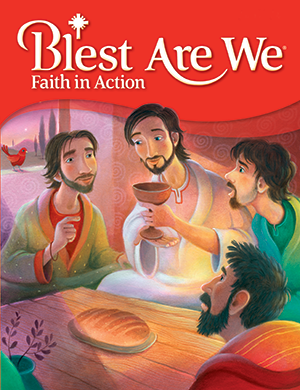Years ago, I came upon this quote: “Every happening, great and small, is a parable whereby God speaks to us, and the art of life is to get the message.”
The words belong to Malcolm Muggeridge, a British journalist, and writer who converted to Catholicism in later life, but the thought that the art of life is to get the message is something I’ve embraced over the years.
So, when I was fortunate to teach a small class of junior high students who had missed a few years of religious studies, I decided to involve them in a class on parables. After all, parables are the tool Jesus the Master Teacher used for his lessons, and he certainly made a distinct impression.
Students learned that a parable makes comparisons and the people or objects or activities in the parable are symbolic of something else. Jesus repeatedly uses the phrase, “The kingdom of Heaven is like …” to begin some parables. It’s a good form for students to follow if they get stuck in writing their own parables.
Since the students were always complaining about the work they had to do in school, I asked them to write a contemporary parable about schoolwork. The next week, The Parable of the Goldfish was sitting on my desk – a story most likely shared from personal experience.
I share it from memory: A young boy walked past the pet store with his friends. The boy decided he wanted a goldfish. He asked the clerk to scoop out the goldfish he wanted. The clerk gave directions for putting the goldfish in a new bowl with new water so the fish stay healthy. But Tommy wasn’t listening. When the boy got home, he filled a bowl with tap water and put his fish in the bowl. Then he went out with his friends. When he came home, his goldfish was floating on top of the water—dead.
When it came time to explain the parable, my student shared that the goldfish symbolized schoolwork, the boy stood for students, and the bowl with new water symbolized future opportunities (sometimes their insight catches you off guard). He summarized simply by saying if you don’t pay attention to your schoolwork, it dies, and you throw away new opportunities that school offers.
Jesus understood the power of stories, simple stories that resonated with the people of his time. If parables are still beyond the understanding of your students, become a storyteller and encourage your students to create stories, as well.
Familiarize yourself with Jesus’ parables — There are more than 40 parables of Jesus. A good place to find multiple parables in one place, along with some explanations, is in Matthew 13:1-53. When students talk about a challenge they are having in their lives, you may be able to share a parable that will help them understand how they are to respond to a difficult situation.
Read the Parable — Students, depending on their age, may also read the parable. Choose one that is not too hard to understand. Consider using props, objects, drawings, and costumes to increase interest and understanding. Look for examples of parables in your RCL Benziger texts, like Blest Are We Faith in Action or Be My Disciples. For younger students, Stories of God’s Love connects children to Scripture through stories.
Explain the Parable — Jesus made sure he always explained the meaning and the symbolism of the parable. Sometimes the disciples asked for an explanation and other times Jesus just offered it, knowing there would be many in the crowd who didn’t understand. Ask questions of your students. What do you think the story means? How does it make you feel?
Help students become storytellers — Sometimes students need help identifying the stories in their own lives. Help them find the stories in their day. Did something happen in school? At home? While they were playing? Did they make a discovery that they could share to help others learn a lesson? Did they learn something about God?
 About the Author
Mary Regina Clifford Morrell, mother of six and grandmother to nine, is a Catholic journalist, author, and syndicated columnist who has served the dioceses of Metuchen and Trenton, New Jersey, and RENEW International in the areas of catechesis and communication.
About the Author
Mary Regina Clifford Morrell, mother of six and grandmother to nine, is a Catholic journalist, author, and syndicated columnist who has served the dioceses of Metuchen and Trenton, New Jersey, and RENEW International in the areas of catechesis and communication.
Product Highlight
Blest Are We Faith in Action
Religion Curriculum - Grades K-8
The Blest Are We Faith in Action religious education program engages children, youth, and their families in learning what Catholics believe, worship, pray, and live. Our technology-enhanced learning resources, including eGuides, eBooks, eAssessments, and online chapter reviews expand learning opportunities for students and flexibility for teachers.
Students will enjoy interactive connections with their textbooks, while teachers will find a variety of useful content for helping students on their formative journey of faith.
